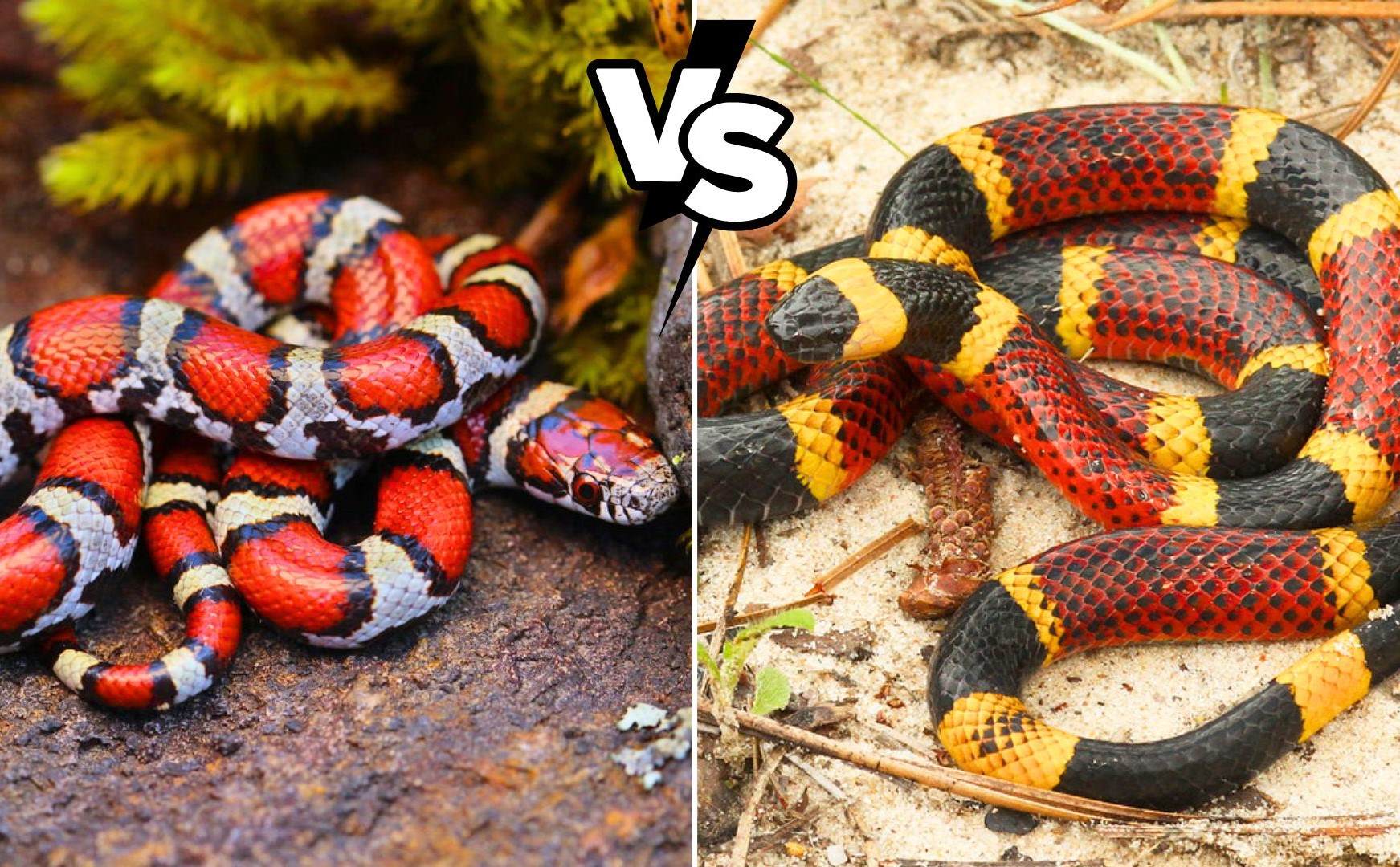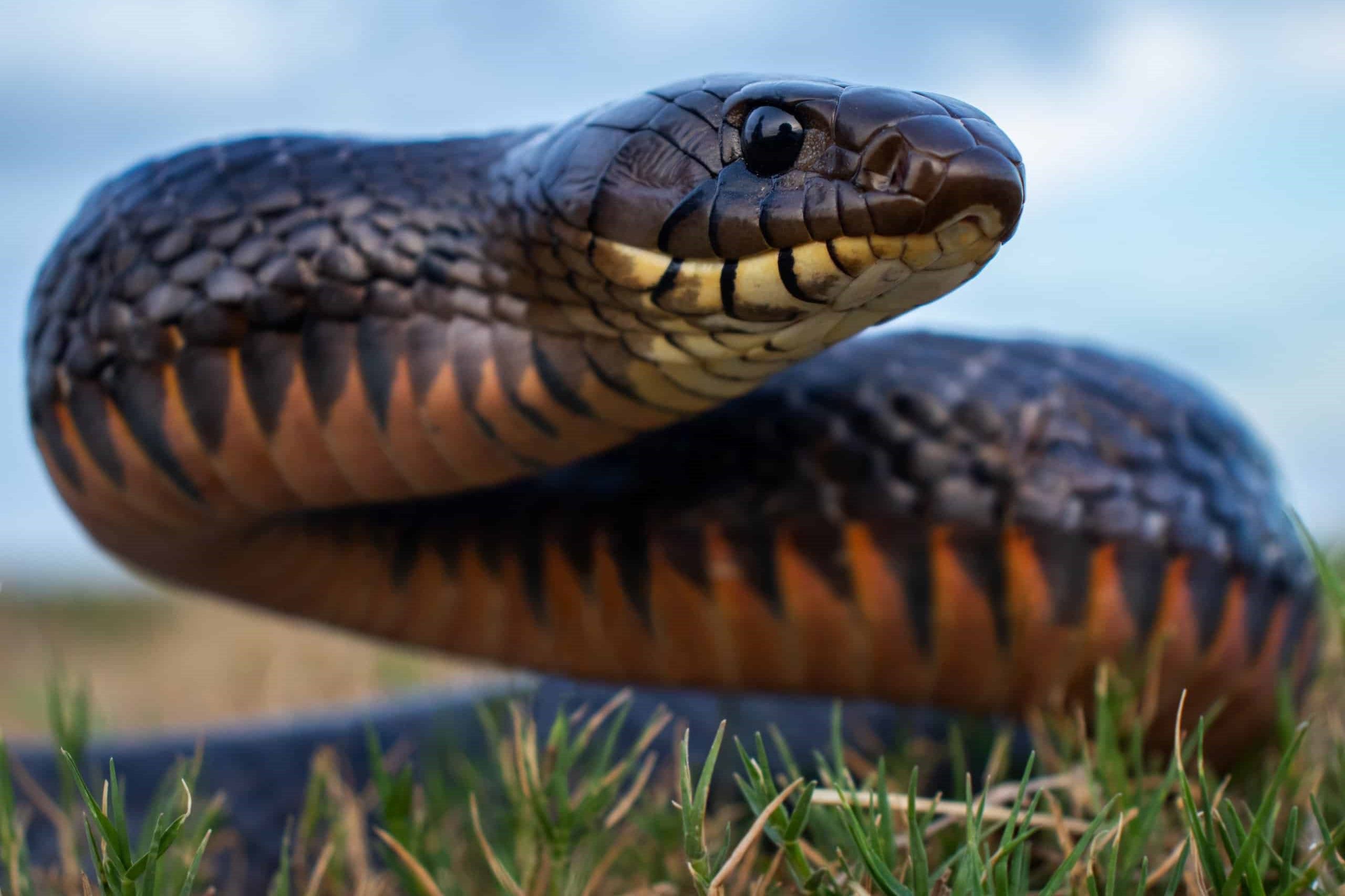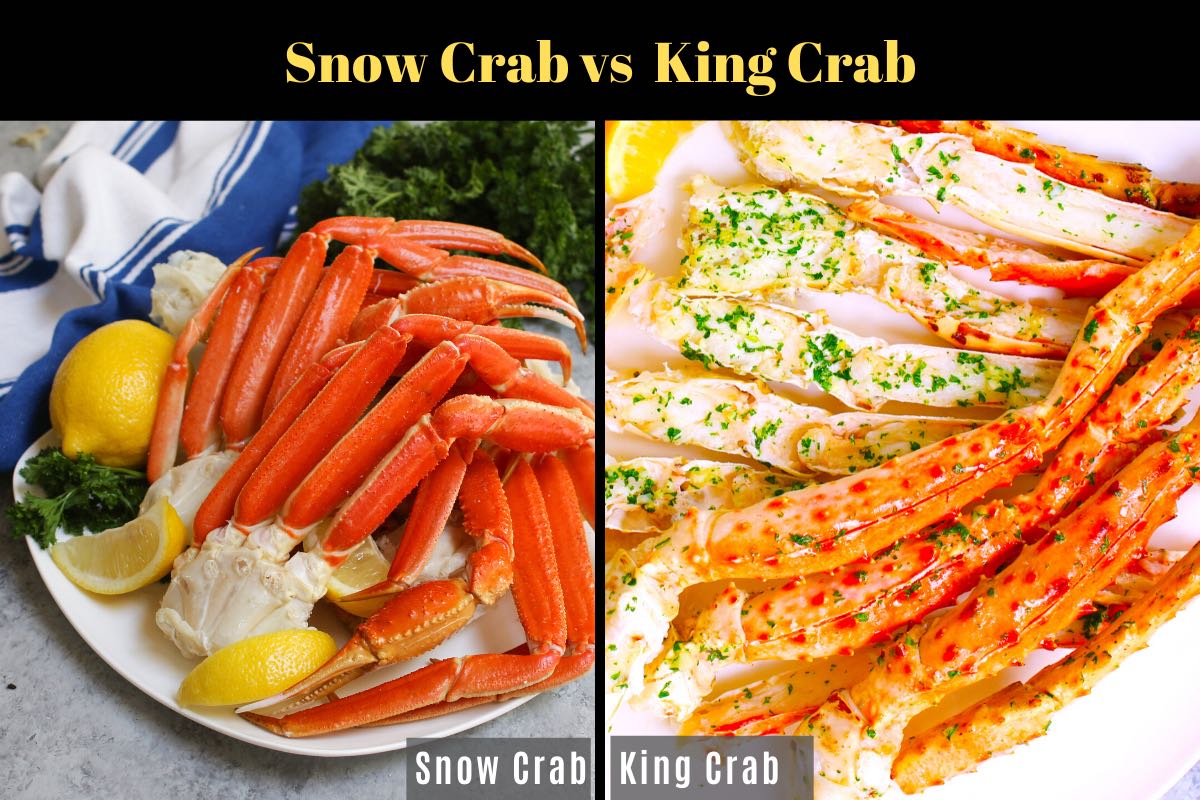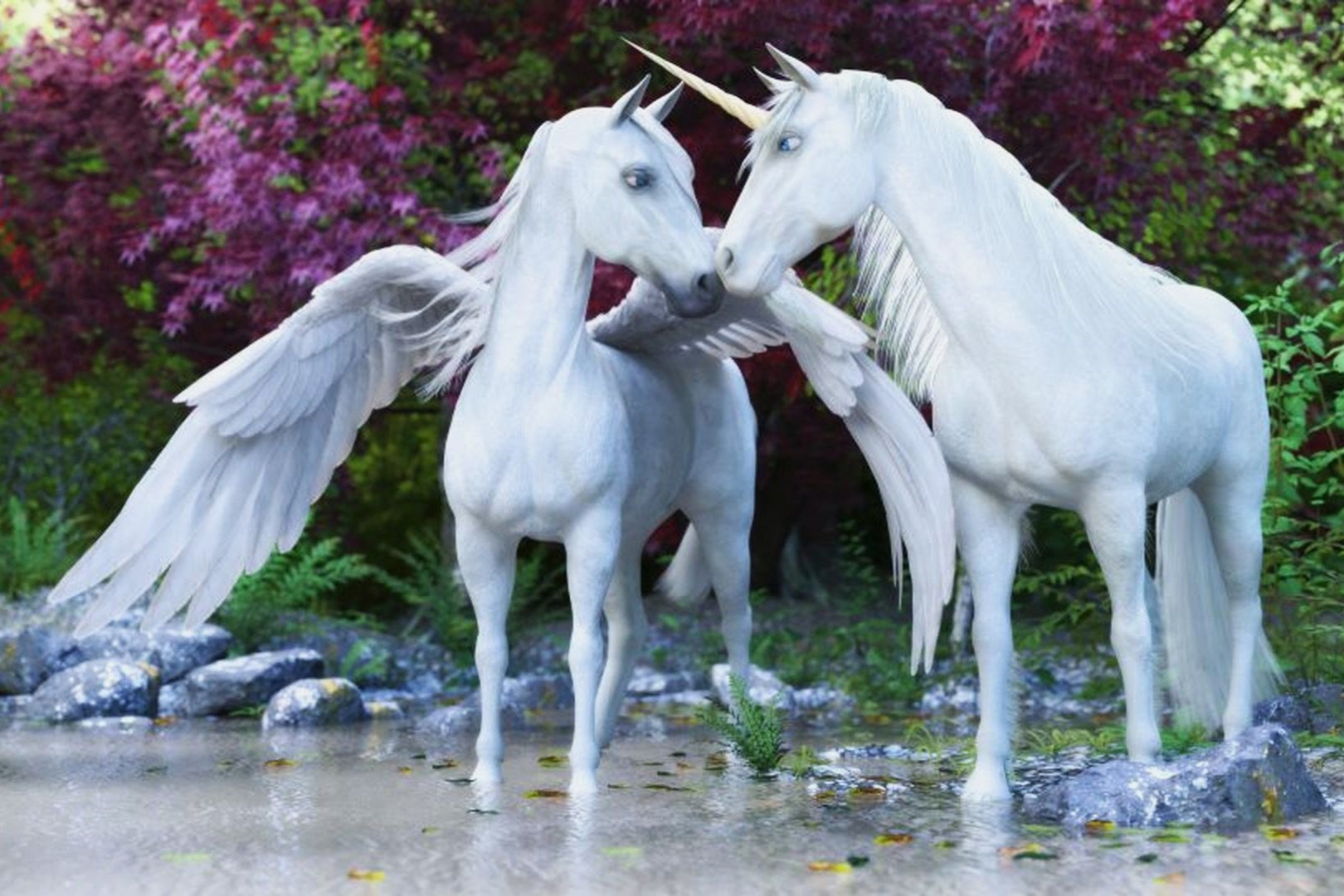Home>Science>Unveiling The Secrets: Identifying Coral Snakes Vs. King Snakes


Science
Unveiling The Secrets: Identifying Coral Snakes Vs. King Snakes
Published: February 22, 2024
Learn the science behind distinguishing coral snakes from king snakes. Uncover the secrets of snake identification and stay informed.
(Many of the links in this article redirect to a specific reviewed product. Your purchase of these products through affiliate links helps to generate commission for Noodls.com, at no extra cost. Learn more)
Table of Contents
Introduction
Coral snakes and king snakes are fascinating creatures that often evoke a sense of wonder and curiosity. These two species belong to the family of venomous and non-venomous snakes, respectively, and are known for their striking appearance and elusive nature. While both are visually similar, they possess distinct characteristics that set them apart. Understanding the differences between coral snakes and king snakes is crucial for anyone venturing into snake-inhabited areas, as it can mean the difference between life and death.
In this comprehensive guide, we will delve into the physical characteristics, geographic distribution, behavior, and diet of coral snakes and king snakes. Furthermore, we will explore the various methods for identifying these snakes, equipping you with the knowledge needed to distinguish between the two species with confidence. By the end of this article, you will gain a deeper understanding of these enigmatic creatures and be better prepared to encounter them in their natural habitats.
Physical Characteristics
Coral snakes and king snakes share a resemblance in their physical appearance, often leading to confusion among observers. Both species exhibit vibrant coloration, characterized by bands of red, black, and yellow or white. However, a key differentiator lies in the arrangement of these bands. Coral snakes display a distinctive pattern of bands, where the red and yellow (or white) bands touch each other. On the other hand, king snakes feature a pattern where the red and black bands are adjacent, with the yellow or white bands separated by the black bands. This variation in band arrangement serves as a fundamental clue in discerning between the two species.
In terms of size, both coral snakes and king snakes typically measure between 20 to 30 inches in length, with some individuals reaching up to 40 inches. Their slender bodies and smooth scales contribute to their sleek and agile appearance, allowing them to navigate various terrains with ease. Despite their relatively small size, these snakes possess a potent combination of agility and camouflage, making them formidable predators in their respective ecosystems.
The head shape serves as another distinguishing feature between coral snakes and king snakes. Coral snakes are characterized by their small, rounded heads, while king snakes exhibit broader, more triangular heads. This contrast in head shape can be a useful indicator when attempting to identify these snakes in the wild, especially when considering the potential risks associated with encountering venomous species.
Furthermore, the eyes of coral snakes and king snakes offer insight into their behavioral patterns. Coral snakes possess small, beady eyes, while king snakes have larger, more prominent eyes. These ocular disparities reflect differences in their hunting strategies and environmental adaptations, shedding light on the unique evolutionary paths of these captivating reptiles.
By closely examining these physical characteristics, individuals can gain a deeper understanding of the intricate nuances that distinguish coral snakes from king snakes. This knowledge is invaluable for wildlife enthusiasts, researchers, and individuals residing in regions inhabited by these snakes, as it enables them to identify and appreciate these remarkable creatures while ensuring their safety and well-being.
Geographic Distribution
The geographic distribution of coral snakes and king snakes provides valuable insight into their habitats and the regions where they can be encountered. Understanding the specific areas where these snakes are found is essential for individuals navigating diverse ecosystems and seeking to identify and appreciate these fascinating reptiles.
Coral snakes are primarily distributed across the southern regions of the United States, with their range extending into Central and South America. In the United States, they are commonly found in states such as Florida, Texas, Louisiana, and parts of the Southwest. Their presence in these areas is influenced by factors such as climate, vegetation, and prey availability. The warm, humid environments of these regions provide an ideal habitat for coral snakes, allowing them to thrive in diverse ecosystems ranging from coastal plains to wooded areas.
On the other hand, king snakes have a broader geographic distribution, encompassing a significant portion of North and Central America. They can be found in various habitats, including forests, grasslands, and even urban areas. In the United States, king snakes are prevalent in states such as California, Arizona, Texas, and parts of the Southeast. Their adaptability to different environments contributes to their widespread presence across diverse landscapes, making them a notable presence in the ecosystems they inhabit.
It is important to note that the geographic ranges of coral snakes and king snakes may overlap in certain regions, leading to potential encounters between these two species. This coexistence underscores the significance of being able to differentiate between them, especially considering the contrasting risks associated with venomous and non-venomous snakes. By familiarizing themselves with the geographic distribution of these snakes, individuals can gain a deeper appreciation for the intricate ecosystems they inhabit and the diverse wildlife that contributes to the rich tapestry of the natural world.
In summary, the geographic distribution of coral snakes and king snakes offers a glimpse into the varied landscapes they call home. Their presence in specific regions reflects the complex interplay between environmental factors and evolutionary adaptations, highlighting the remarkable diversity of habitats that support these enigmatic reptiles. By understanding the geographic distribution of these snakes, individuals can cultivate a deeper connection to the natural world and develop a heightened awareness of the captivating wildlife that surrounds them.
Behavior and Diet
The behavior and diet of coral snakes and king snakes offer a captivating glimpse into the ecological roles and predatory strategies of these enigmatic reptiles. Understanding the distinct behaviors and dietary preferences of these snakes provides valuable insights into their roles within their respective ecosystems and sheds light on the fascinating intricacies of their natural history.
Coral snakes are known for their elusive and secretive nature, often preferring to avoid confrontation with potential threats. They are primarily nocturnal, relying on the cover of darkness to carry out their activities, including hunting for prey. Their stealthy demeanor and cryptic coloration allow them to move discreetly through their habitats, making them elusive and challenging to encounter in the wild. Additionally, coral snakes are adept burrowers, utilizing their slender bodies to navigate through underground tunnels and seek refuge in concealed locations, further enhancing their ability to evade detection.
In contrast, king snakes are more active during the day, displaying a bold and exploratory nature as they navigate their surroundings in search of food. Their diurnal behavior sets them apart from the predominantly nocturnal habits of coral snakes, highlighting the diverse activity patterns exhibited by these two species. King snakes are renowned for their powerful constricting abilities, enabling them to overpower and subdue a wide range of prey, including rodents, lizards, and other snakes. This predatory versatility contributes to their status as apex predators within their ecosystems, playing a crucial role in regulating local wildlife populations.
When it comes to diet, coral snakes primarily feed on smaller reptiles, including lizards and other snakes, as well as amphibians and occasionally small mammals. Their diet reflects their specialized predatory niche, targeting specific prey species that are well-suited to their hunting strategies and ecological requirements. This selective feeding behavior underscores the intricate ecological relationships that shape the dynamics of coral snake populations and their impact on local food webs.
On the other hand, king snakes exhibit a more varied diet, consuming a diverse array of prey that encompasses rodents, birds, eggs, and other snakes, including venomous species such as rattlesnakes. Their ability to consume venomous snakes without being affected by the toxic compounds further emphasizes their remarkable adaptability and predatory prowess. This dietary flexibility positions king snakes as influential regulators of local ecosystems, exerting a significant impact on the dynamics of prey populations and contributing to the overall balance of wildlife communities.
By delving into the behavior and diet of coral snakes and king snakes, individuals can gain a deeper appreciation for the complex interactions that shape the ecological roles of these remarkable reptiles. The contrasting behavioral patterns and dietary preferences of these snakes underscore the diverse strategies employed by predators in their pursuit of sustenance, illuminating the intricate web of life that permeates their natural habitats. As we continue to unravel the mysteries of these captivating creatures, we are afforded a glimpse into the captivating tapestry of the natural world, where every species plays a unique and indispensable role in the intricate fabric of life.
Identifying Coral Snakes
Identifying coral snakes is crucial for individuals venturing into snake-inhabited areas, as these elusive reptiles possess potent venom that can pose a serious threat. Recognizing the key visual cues and distinct characteristics of coral snakes is essential for ensuring the safety of both humans and pets. The mnemonic phrase "red on yellow, kill a fellow; red on black, friend of Jack" serves as a helpful mnemonic aid in distinguishing coral snakes from non-venomous look-alikes such as scarlet king snakes and milk snakes.
Coral snakes are characterized by their vibrant coloration, featuring bands of red, black, and yellow or white. The key distinguishing factor lies in the order of these bands, where the red and yellow (or white) bands directly touch each other. This unique band arrangement serves as a definitive indicator of a true coral snake, signaling the presence of potent neurotoxic venom. Additionally, coral snakes exhibit a slender body and a small, rounded head, further contributing to their distinctive appearance.
When encountering a snake in the wild, it is essential to exercise caution and refrain from approaching or handling it without proper knowledge and expertise. By familiarizing oneself with the visual markers and behavioral traits of coral snakes, individuals can enhance their ability to identify these venomous reptiles and take appropriate precautions to avoid potential encounters.
In summary, the ability to identify coral snakes is a valuable skill that empowers individuals to navigate snake-inhabited environments with heightened awareness and caution. By recognizing the unique visual characteristics and distinctive color patterns of coral snakes, individuals can cultivate a deeper understanding of these enigmatic reptiles while prioritizing their safety and well-being in diverse ecosystems.
Identifying King Snakes
Identifying king snakes is essential for wildlife enthusiasts, researchers, and individuals residing in regions inhabited by these fascinating reptiles. King snakes exhibit a striking appearance, characterized by bands of red, black, and yellow or white, often leading to confusion with venomous coral snakes. However, a key differentiator lies in the arrangement of these bands, providing valuable clues for distinguishing king snakes from their venomous counterparts.
The distinctive pattern of bands displayed by king snakes features red and black bands that are adjacent, with the yellow or white bands separated by the black bands. This unique band arrangement serves as a fundamental indicator of a non-venomous king snake, offering a clear visual contrast to the band configuration of coral snakes. Additionally, king snakes possess a slender, agile body and a broader, more triangular head, setting them apart from coral snakes and contributing to their distinct visual profile.
When encountering a snake in its natural habitat, it is crucial to approach with caution and refrain from handling it without proper knowledge and expertise. By familiarizing themselves with the key visual markers and behavioral traits of king snakes, individuals can enhance their ability to identify these captivating reptiles and appreciate their role within diverse ecosystems.
In summary, the ability to identify king snakes is a valuable skill that empowers individuals to navigate snake-inhabited environments with heightened awareness and appreciation for the rich biodiversity that surrounds them. By recognizing the unique visual characteristics and distinctive color patterns of king snakes, individuals can deepen their understanding of these remarkable reptiles while fostering a sense of respect and stewardship for the natural world.
Conclusion
In conclusion, the distinction between coral snakes and king snakes encompasses a rich tapestry of visual cues, geographic distributions, behavioral patterns, and dietary preferences. The unique characteristics of these enigmatic reptiles offer a captivating glimpse into the intricate web of life that permeates diverse ecosystems, showcasing the remarkable diversity and adaptive strategies exhibited by these species.
By unraveling the physical characteristics of coral snakes and king snakes, individuals gain a deeper appreciation for the subtle nuances that define these captivating reptiles. The vibrant coloration and distinct band arrangements serve as fundamental indicators for distinguishing between the two species, empowering individuals to identify and appreciate these remarkable creatures while prioritizing their safety in snake-inhabited environments.
Furthermore, the geographic distribution of coral snakes and king snakes provides valuable insights into the varied landscapes they inhabit, reflecting the complex interplay between environmental factors and evolutionary adaptations. Understanding the regions where these snakes are found fosters a heightened awareness of the diverse ecosystems that support their existence, highlighting the interconnectedness of wildlife and habitats across North and Central America.
Exploring the behavior and diet of coral snakes and king snakes unveils the fascinating ecological roles and predatory strategies of these enigmatic reptiles. From the elusive, nocturnal nature of coral snakes to the diurnal boldness and predatory versatility of king snakes, these behavioral patterns offer a glimpse into the diverse strategies employed by predators in their pursuit of sustenance. Additionally, the dietary preferences of these snakes underscore their influence on local wildlife populations, shaping the dynamics of prey communities and contributing to the intricate balance of ecosystems.
In essence, the ability to identify coral snakes and king snakes is a valuable skill that empowers individuals to navigate snake-inhabited environments with heightened awareness and respect for the captivating wildlife that surrounds them. By recognizing the unique visual characteristics and behavioral traits of these snakes, individuals can deepen their understanding of these remarkable reptiles while fostering a sense of stewardship for the natural world. As we continue to unravel the mysteries of these captivating creatures, we are afforded a glimpse into the captivating tapestry of the natural world, where every species plays a unique and indispensable role in the intricate fabric of life.














